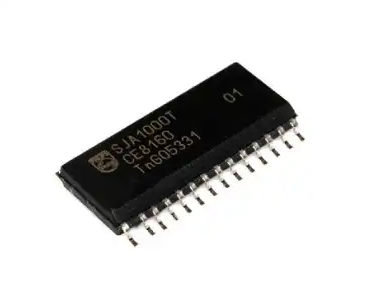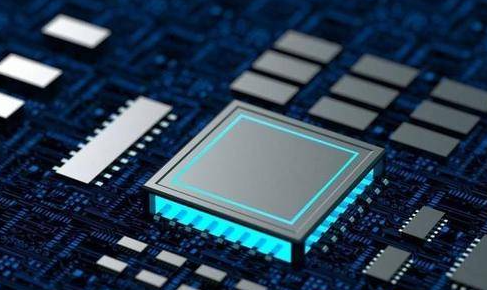Classification Catalog of Electronic Components: A Comprehensive Guide
Introduction
In the rapidly evolving world of electronics, the ability to efficiently identify, select, and source components is paramount for engineers, procurement specialists, and hobbyists alike. The sheer volume and diversity of available parts can be overwhelming, making organization and accessibility critical factors for project success. This is where a well-structured Classification Catalog of Electronic Components becomes an indispensable tool. It serves as the foundational framework that brings order to the vast electronic ecosystem, enabling faster design cycles, reducing errors, and optimizing the supply chain. A robust catalog does more than just list parts; it provides a logical, hierarchical structure that groups components based on their function, material, application, and physical properties. This article delves deep into the architecture, significance, and modern evolution of these classification systems, highlighting how platforms like ICGOODFIND are revolutionizing the way we interact with electronic component data. Understanding this catalog is not just about knowing what parts exist; it’s about mastering the map that guides you through the entire electronic component landscape.

The Foundational Structure of Electronic Component Classification
The classification of electronic components is not arbitrary; it is built upon a logical and multi-faceted structure designed to cater to various user needs, from technical specification searching to procurement. The primary classification tiers are typically based on function, technology, and package type.
1. Classification by Function
This is the most intuitive and common method of categorization. It groups components based on their fundamental role within an electronic circuit. * Passive Components: These components cannot introduce net energy into a circuit they are connected to. They can only absorb energy. This broad category includes: * Resistors: Components that oppose the flow of electric current. Sub-classifications include fixed resistors, variable resistors (potentiometers and rheostats), and specialized types like thermistors and varistors. * Capacitors: Components that store electrical energy in an electric field. They are further classified by dielectric material, such as ceramic, electrolytic (aluminum, tantalum), film, and supercapacitors. * Inductors and Coils: Components that store energy in a magnetic field when electrical current flows through them. This category includes chokes, transformers, and inductors for various frequency applications. * Active Components: These components can inject power into a circuit and are capable of controlling current flow. They typically require a source of energy. * Semiconductors: The heart of modern electronics. This includes diodes (rectifier, Zener, LED), transistors (BJT, FET, MOSFET), and integrated circuits (ICs). ICs themselves represent a massive sub-category, including microprocessors, memory chips, logic gates, amplifiers, and voltage regulators. * Electromechanical Components: These components involve both electrical and mechanical processes. * Switches and Relays: Devices that can open or close an electrical circuit. * Connectors: Components used to join electrical terminations and create a circuit (e.g., board-to-board, wire-to-board). * Protection Devices: Such as fuses and circuit breakers designed to safeguard other components.
2. Classification by Technology and Materials
This method delves deeper into the construction and material science behind components. For instance, resistors can be carbon film, metal film, or wirewound. Capacitors are defined by their dielectric: ceramic, aluminum electrolyte, or polyester film. Semiconductors are classified by their material composition, like silicon (Si), gallium arsenide (GaAs), or silicon carbide (SiC), which directly impacts their performance characteristics such as switching speed, power handling, and temperature tolerance.
3. Classification by Package Type
The physical packaging of a component is crucial for PCB design and assembly. This classification includes: * Through-Hole Technology (THT): Components with leads that are inserted into holes drilled in the PCB (e.g., DIP packages for ICs). * Surface-Mount Technology (SMT/SMD): Components that are mounted directly onto the surface of the PCB. This includes a vast array of package sizes like SOIC, QFP, QFN, and the tiny 0201 and 01005 packages for ultra-compact designs.
A comprehensive Classification Catalog seamlessly integrates these three dimensions, allowing a user to drill down from a high-level functional group (e.g., “Semiconductors”) to a specific technology (“Silicon Carbide MOSFETs”) in a particular package (“DFN-8”).
The Critical Role of a Unified Catalog in the Supply Chain
A logically structured classification catalog transcends its role as a simple reference tool; it becomes the backbone of an efficient and resilient electronics supply chain. Its impact is felt across multiple domains.
For Design Engineers, the catalog is the starting point for any new project. A well-designed catalog allows for parametric search—finding components based on required specifications like resistance value, tolerance, power rating, operating temperature, and package size. This dramatically accelerates the component selection process, ensuring that designers choose parts that are not only functionally correct but also available and suitable for manufacturing. Without this structure, engineers would waste countless hours cross-referencing datasheets from dozens of different manufacturer websites.
For Procurement and Supply Chain Managers, accuracy is everything. A unified classification system ensures that everyone involved—from engineering to purchasing to the contract manufacturer—is using the same language. This eliminates confusion caused by different part numbering schemes or naming conventions across manufacturers and distributors. It enables efficient inventory management, accurate forecasting, and simplifies the process of finding alternative parts or second sources when facing shortages or end-of-life (EOL) notifications. In today’s market, characterized by frequent disruptions, this agility is a significant competitive advantage.
For the Entire Industry, standardization through classification catalogs facilitates communication and data exchange. Many catalogs align with industry standards such as the UNSPSC (United Nations Standard Products and Services Code) or IEC standards, which helps in global trade and e-commerce. It forms the basis for sophisticated digital platforms that connect buyers with sellers globally.
The Digital Evolution: From Paper to AI-Powered Platforms like ICGOODFIND
The traditional paper-based catalog is long obsolete. The digital revolution has transformed static PDF lists into dynamic, intelligent, and interconnected databases. Modern classification catalogs are now cloud-based platforms that offer real-time data on pricing, availability, lifecycle status, and compliance (e.g., RoHS, REACH).
This is where next-generation components search engines come into play. A platform like ICGOODFIND exemplifies this evolution. It leverages the power of a deeply structured Classification Catalog of Electronic Components but enhances it with advanced features. Instead of merely browsing categories, users on ICGOODFIND can perform intelligent searches using keywords, parameters, or even manufacturer part numbers. The platform can provide cross-references, suggest alternates, and aggregate inventory data from multiple global distributors onto a single screen. It acts as a meta-search engine specifically for electronic components.
The future points towards even greater integration of artificial intelligence. AI can predict component obsolescence, suggest optimizations for Bill of Materials (BOM) cost reduction, and even assist in schematic design by recommending components that commonly work together based on analysis of countless existing designs. The foundational classification system provides the structured data that these AI algorithms need to learn and provide accurate, valuable insights. Platforms that master this combination of comprehensive classification and intelligent search functionality are becoming essential tools for anyone working in electronics.
Conclusion
The Classification Catalog of Electronic Components is far more than a simple list; it is the essential framework that brings clarity, efficiency, and scalability to the complex world of electronics. By providing a logical structure based on function, technology, and packaging, it empowers engineers to design better products faster and enables supply chains to operate with greater accuracy and resilience. As the industry continues to advance at a breakneck pace, the importance of this organized system only grows. The digital transformation has supercharged these catalogs, turning them into intelligent platforms that provide real-time data and powerful analytics. Embracing these tools, especially sophisticated search engines that understand this deep classification like ICGOODFIND, is no longer optional for professionals who wish to stay competitive. Mastering the catalog is synonymous with mastering the market itself.















